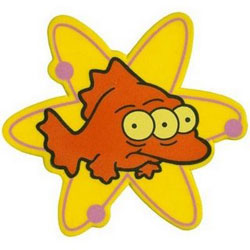How does a nuclear power plant work?
 Power plants, whether they are coal, gas, oil or nuclear, use steam to make electricity. They operate like a giant tea kettle, turning water into steam which spins giant turbines that power generators to make electricity. The primary difference between fossil and nuclear power plants is that nuclear plants use uranium as the fuel to produce steam instead of burning fossil fuels.
Power plants, whether they are coal, gas, oil or nuclear, use steam to make electricity. They operate like a giant tea kettle, turning water into steam which spins giant turbines that power generators to make electricity. The primary difference between fossil and nuclear power plants is that nuclear plants use uranium as the fuel to produce steam instead of burning fossil fuels.
In a nuclear power plant reactor, water is heated by a process called nuclear fission.
- Uranium atoms are split when they are struck by neutrons.
- When the atoms split, they release heat, along with two or three more neutrons.
- These neutrons then strike other uranium atoms, again causing the atoms to split, release heat and again, two or three more neutrons. This is called a chain reaction.
The steam then spins the turbines that are connected to the generators to produce electricity.
Nuclear energy is released by three exothermic processes:
- Radioactive decay, where a proton or neutron in the radioactive nucleus decays spontaneously by emitting a particle
- Fusion, two atomic nuclei fuse together to form a heavier nucleus
- Fission, the breaking of heavy nucleus into two nuclei
Approximately 17% of worldwide electricity was generated from nuclear reactors. Countries generating the largest percentage of their electricity from nuclear energy were France, 76.8%; Lithuania, 64.4%; Slovakia 54.3%; Belgium, 54%; Bulgaria, 32.1%; Sweden, 46.1%; Ukraine, 48.1%; Hungary, 36.8%; Slovenia, 41.6%; Switzerland, 40%; South Korea 35.3%; Armenia 43.5%; United States 20%. In total, 16 countries relied on nuclear energy to supply at least one-quarter of their total electricity. (NEI)
Nuclear Power Facts
- Nuclear energy was discovered by a French physicist - Henri Becquerel, in 1896.
- 17% of the world's electricity came from 442 nuclear power plants in 1996. Nuclear energy accounted for 77% of France's electricity, 52% of Sweden's, and 22% of the United States'.
- The energy produced per amount of material consumed is the highest available;
- A single ton of uranium produces more energy than a million tons of coal.
- Uranium-235 can produce 3.7 million times as much energy as the same amount of coal;
- Costs are competitive with coal, the major source used in the world;
- Uranium, the source material, is abundant;
- Plutonium, a by-product of commercial nuclear plant operation, can also be used as a fuel;
- Nuclear energy produces less waste than any major energy production process;
- Nuclear power plants do not pollute our air by avoiding carbon dioxide emissions.
- Less radiation is given off by a nuclear power plant than a coal-burning plant.
- An average individual in the United States absorbs 360 millirems of radiation every year.
- Nuclear power plants emit no carbon dioxide (which contributes to global warming and the greenhouse effect) nor sulfur and nitrogen oxides (which cause acid rain).
- Nuclear power plants save thousands of lives every year in the United States. This is because nuclear plants replace many coal plants, which emit tiny particulates into the atmosphere. These particulates are believed to kill thousands of Americans each year. Nuclear plants emit no particulates.
- There is a good solution to disposing of our nuclear wastes -- to bury them deep underground where they will be harmless. In contrast, there is no solution to handling the billions of tons of carbon dioxide which coal and natural gas plants discharge yearly nor the particulates which coal plants emit -- except to discharge them into the atmosphere we breath.The sun uses nuclear fusion of hydrogen atoms into helium atoms. This gives off heat and light and other radiation.
- The sun uses nuclear fusion of hydrogen atoms into helium atoms. This gives off heat and light and other radiation.
- Nuclear power is the only energy industry which takes full responsibility for all its wastes, and costs this into the product.
